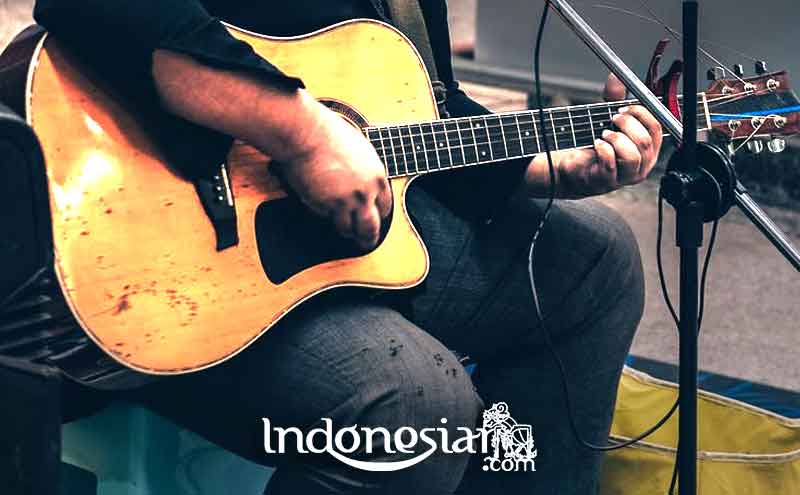Tifa is one of the musical instruments originating from eastern Indonesia, especially the regions of Papua and Maluku. This Tifa musical instrument is a kind of percussion instrument made of wood and tubular. The shape and function at a glance is almost the same as the drum instrument, but the sound of this Tifa instrument sounds lighter. Tifa is one of the famous musical instruments among the people of Papua and Maluku. This instrument is usually used to accompany traditional ceremonies, musical performances, or traditional dances.
The Origin of the Tifa Musical Instrument
The history of the existence of this Tifa musical instrument is still not known with certainty. But it is estimated that this Tifa instrument has existed in Papua and Maluku since time immemorial. This can be seen from the various traditional rituals and dances of the people there that have existed since ancient times, and using Tifa as an accompanist. In addition, because the location of the islands of Papua and Maluku which is close together is what allows the similarity between their cultures, one of which is this Tifa musical instrument.
Tifa Musical Instrument Forms
Tifa musical instrument is basically a musical instrument made of tubular wood with a hollow hole in the center. Then one side is covered with dried animal skin. In addition, the Tifa wood parts are usually carved in the form of carvings typical of each region. The shape of the Tifa musical instrument is at a glance almost the same as that of the Drum, but its size and sound are slightly different.
Type of Tifa Musical Instrument
Tifa musical instruments in the Papua region and in the Maluku region are basically very different, especially in terms of form. Tifa musical instruments in the Papua region are usually more curved in the middle and have a handle in the middle. Whereas Tifa in the Maluku area is a regular tube and has no handle. Tifa musical instruments are also divided into several types, including Tifa jekir, Tifa cut, Tifa base, and Tifa bass. The Tifa type is usually what distinguishes the color of the sound, so when played together it must be adjusted to the sound and function of each.
How to Play the Tifa Musical Instrument
To play a musical instrument Tifa is usually adjusted to the type of Tifa played. Some use hit instruments, and some are only played by hand. Similar to the Gendang musical instrument, Tifa is also a type of musical instrument that has one voice. So that when played with other musical instruments, Tifa becomes the main sound and rhythm regulator. However, if played with other types of Tifa, it must be adjusted. Because each type of Tifa usually has a different sound, so it must be combined in order to become a good rhythm and pleasant to listen to.
Tifa Musical Instrument Functions
Tifa musical instruments in the Papua region and in the Maluku region have the same function. Tifa is usually used by the community to accompany traditional ceremonies, traditional dance accompaniment, or song accompaniment. To accompany the event, usually the type of Tifa used is adjusted to the needs, especially when accompanying traditional dances. Because in traditional dances the type of music greatly influences the motion and performance of the dance.
The Development of the Tifa Musical Instrument
Tifa musical instrument is still preserved and maintained until now. This musical instrument is still often used to accompany various events such as traditional ceremonies, traditional dances, musical performances and others. In its development, various creations and variations in playing Tifa music are also often performed in each show. This is certainly done to make it look attractive, but must adjust to the dance or song movements that accompany it. In addition, Tifa is not only known by the people in Maluku and Papua, but Tifa has also begun to be recognized by the wider community in Indonesia, even abroad.
So much information from us about Tifa Traditional Musical Instruments from Maluku and Papua. Hopefully it will be useful and will increase your knowledge of traditional arts in Indonesia. So, have you ever tried traveling to Maluku and Papua?































